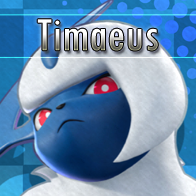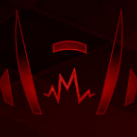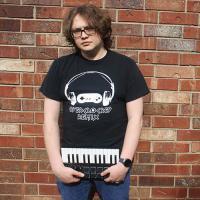Leaderboard
Popular Content
Showing content with the highest reputation on 09/07/2016 in all areas
-

Speeding Towards Adventures: 25 Years of Sonic the Hedgehog - History
Black_Doom and one other reacted to KingTiger for a topic
@Jorito & @Black_Doom - just making sure you got the WiP I sent in. I'm making pretty swift progress currently. Also, could I please get access to the project subforum?2 points -
"A Formidable Enemy", my first song in EWQLSO.
TheChargingRhino reacted to YoungProdigy for a topic
Hey, YoungProdigy here. I signed up for the East West Composer Cloud trial and was able to download EWQLSO gold. "A Formidable Enemy" is my first song made using EWQLSO. You can listen to it here: As always, feedback is welcome.1 point -
"A Formidable Enemy", my first song in EWQLSO.
TheChargingRhino reacted to YoungProdigy for a topic
When I said "I have listened to real orchestral arrangements", I meant that I understand how real orchestras are arranged. I agree with most of your feedback though. The samples in EWQL seem to have reverb on them by default. So when I load up samples, they automatically have reverb. My notes definitely could use some quantization. I don't think I should aim for a "real orchestra" sound with these samples. There's simply not enough convincing samples and scripts to do that. However, I fully agree that more can be done to make it sound less like a midi. I think my goal should be to write something "similar" to a real orchestra, but not 100% exact. So I should aim to have "similar" expressiveness to a real orchestra; but not 100% of the expressiveness of a real orchestra.1 point -

"A Formidable Enemy", my first song in EWQLSO.
TheChargingRhino reacted to timaeus222 for a topic
Listening to something and understanding something are two completely different things. I don't believe you processed them fully enough to train your brain. If you did, your music would be more refined. Just calling it like it is. You say it's "easier said than done", which is true, but it's not an excuse to spend less time on it and assume you'll never get it. Assuming you'll never get it is a great way to not get it. So you have to put more of your time into learning how to write for orchestra if you're going to want to write something more realistic. I do hear the similar styles, but you're still missing the expression present in the SMG example, real or not. Your orchestra is a little distant, which means the close / room / hall mic mix is skewed towards the hall mic (or away from the close mic) or you don't have the flexibility to mix all three together (you wouldn't beneath Platinum version of EWQLSO I believe). Or your samples are pre-baked in reverb. Your brass in particular is noticeably lacking dynamic crossfade automation, so the high-dynamic "blatty" tone to the brass is constantly there, without an emulated decrease in incoming breath via a lower dynamic (often done with CC1 or CC11). Even if you don't have dynamic crossfade, you could at least record volume event edits. It's not the same thing, but it approximates it. You haven't fully accounted for the slow attacks of certain articulations (particularly in the non-staccato brass and non-staccato strings), so the slow articulations are late. Therefore, it would help to shift those slow articulations back in time a little to make sure they are more on-rhythm. As Slimy mentioned, a lot of your notes sound quantized. One way to help that is to write bigger chords, and offset the notes in your chords. This at once gives you a bigger sound and a bit more flexibility when it comes to aligning the note transients.1 point -

Super Smash Bros. 64 - All Clear
TheChargingRhino reacted to Kit Vivid for a topic
Yeah, I dig the vibe you've got going on. Definitely cool sounding. First thing that sticks out to me is that the climax of your buildups are clipped pretty heavily which is the result of being too loud, basically. Once everything gets heavy around 0:54, the only thing that remains distinct is the kick and hat. Everything is super muddy and in serious need of some EQ'ing; cut out those unnecessary frequencies and make sure everything has its own place in the soundscape. Very subtle panning could help a bit too. As far as arrangement goes, the source itself doesn't have much substance but you could derive some sense of melody from it and potentially throw a lead over what you've got that would help vary things up and add a bit more excitement. Looking forward to hearing what you do with this dude, definitely a solid start.1 point -

list of free arrangements?
namdor reacted to timaeus222 for a topic
As I mentioned earlier, on this page, the albums are listed; underneath the titles are the labels OCRX-00YY. That tells you what album number it is. If it's OCRC, then it's commercial, but OCRA is free. So the TMNT album would be listed as OCRA-0047.1 point -

"Another One Bites the Dust (F-Zero Version"
TheChargingRhino reacted to Sr. Lan Belmont for a topic
Another one for fun! Enjoy1 point -

OverClocked Records Question: Advertising/Marketing?
HoboKa reacted to The Nikanoru for a topic
There was a recent discussion of ads for OC ReMixes on YouTube that some of the staff here MIGHT have heard about. I've done a little bit of browsing and investigation and noticed that OverClocked Records has very little - if any - advertising presence outside of OCR itself, aside from a few articles that are two years old. Heck, there's no advertising on the OC Records site itself either. This seems counter-intuitive, considering how much advertising there is for OCR. Is there no appetite for advertising this awesome music elsewhere, or is there a cost/legal restraint, or has no one thought about this because they are too busy with other things?1 point -
Another tidbit I'd add: If you pitch a perfectly reasonable rate, and they freak out about it, move on. Don't waste your time negotiating, at least not that much. If a game developer is not willing to pay a reasonable price for music, then they're not willing to get good music, which usually means they're not likely to care about conducting good business, hiring good artists or designers, or -- simply put -- releasing a good game. Also, if it's some first-time indie dev, and they're short on cash, remember that not all payment has to be monetary or up-front. You could request to retain full distribution rights to the soundtrack and have them put an obvious link on the game's main website to the soundtrack on Bandcamp (kind of a risk, but less so if you're confident in your music's quality). You could ask for services from their developers to help code and design your website. You could even work out some sort of word-of-mouth networking endorsement, and have the developer spread the word to other game developers about your services and their positive experience working with you. There are a lot of good things you could ask for besides money. Like Nabeel said, always get something out of it. It doesn't always have to be just money, but it should always further your goals.1 point
-

PRC322 - May the Best Source Win (Bomberman 3 + Hobbit + Gradius 3)
TheChargingRhino reacted to Kapden for a topic
dawww, wodden spoon is cute :3 Nice job you guys! Really enjoyed listening to yours! PlanarianHugger! I am impressed by how much you got done, what with finals and all too! When I only saw Nathiel Plasmore had posted I didnt want him to be all alone! after I uploaded I realized we uploaded at like the same time, which was pretty funny. Again nice mixes from the both of you, did a good job actually Remixing them1 point

